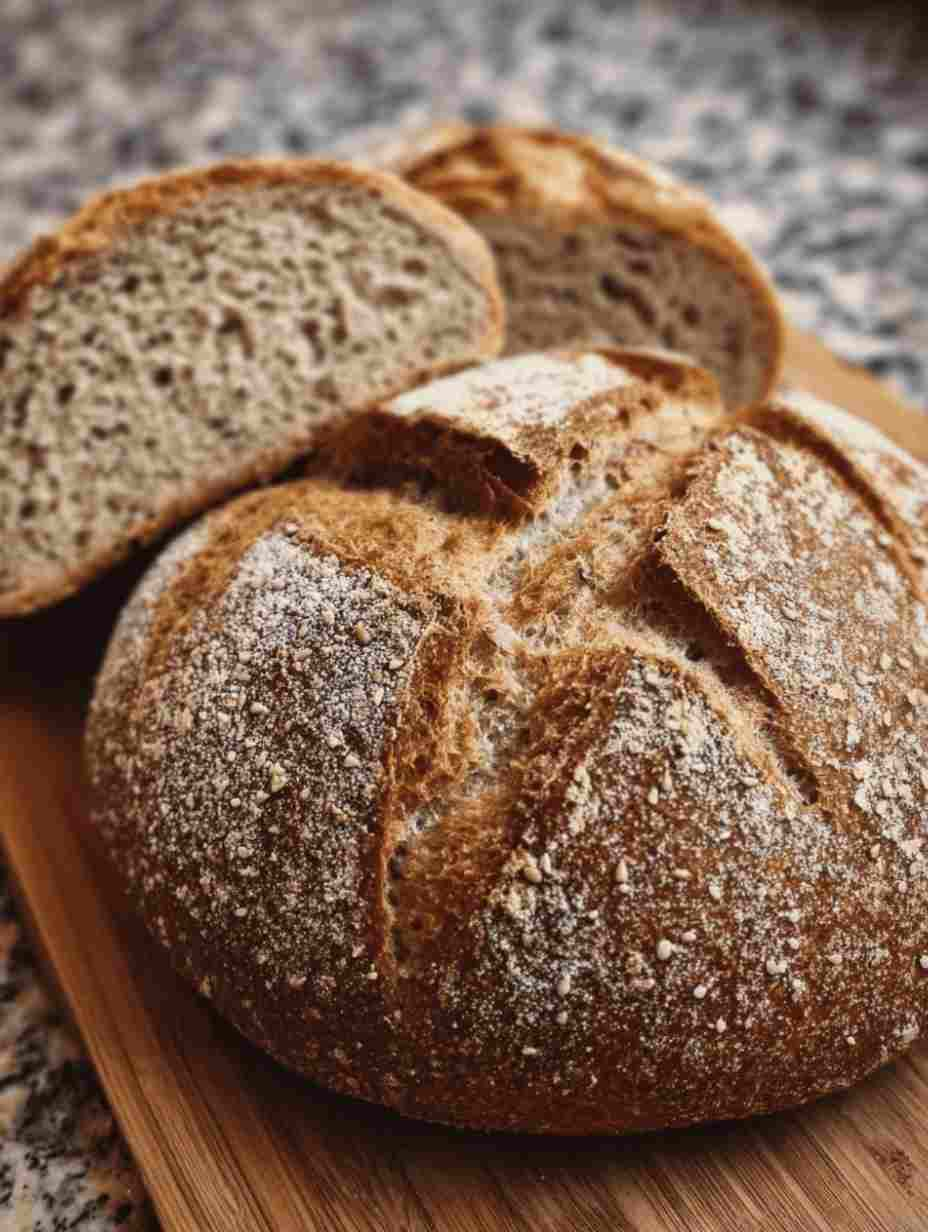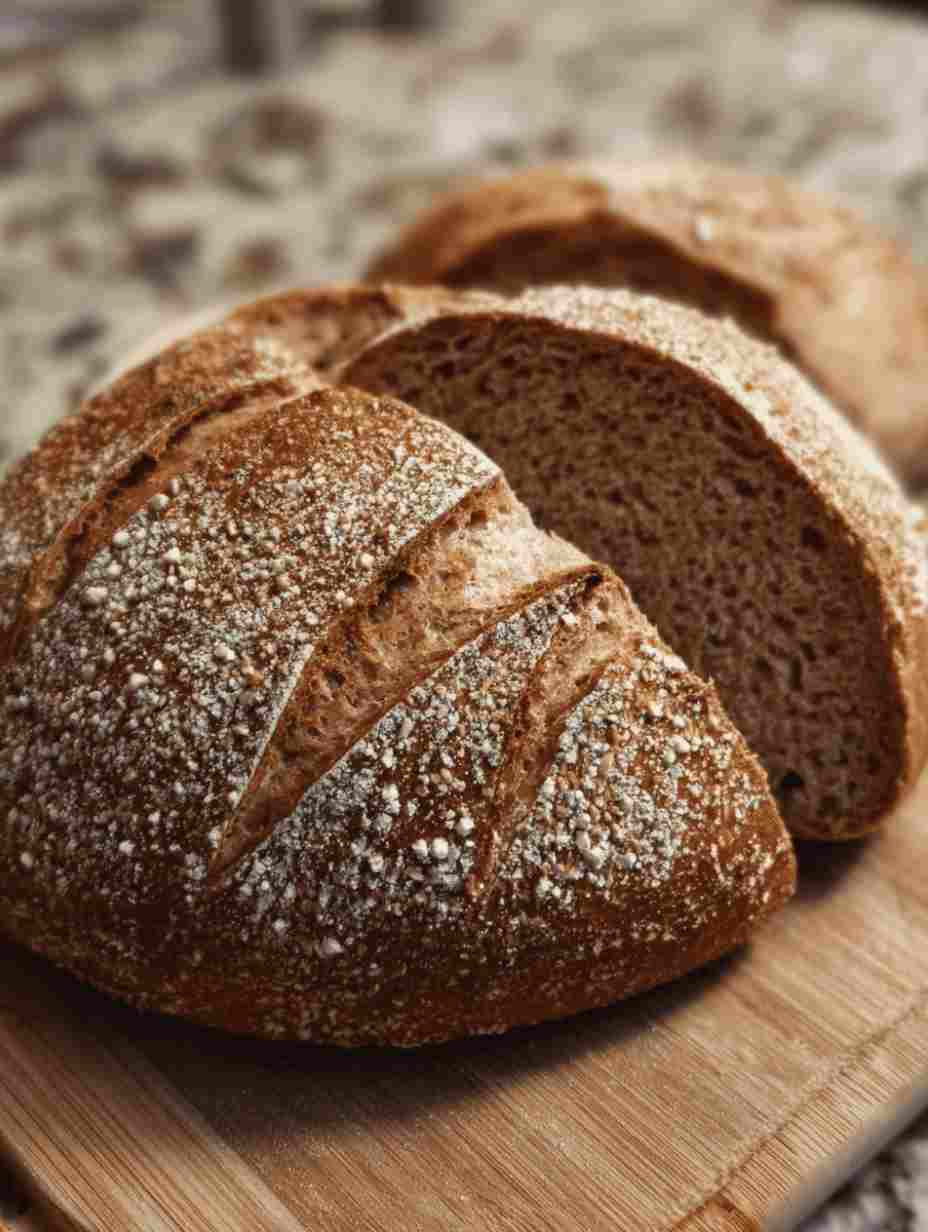If you’re a fan of hearty, slightly tangy bread with a dense yet tender crumb, this rye bread recipe is a must-try. Imagine slicing into a warm, golden loaf with a rich, earthy aroma that fills your kitchen—perfect for sandwiches, toast, or simply enjoying with butter. Its subtle sweetness from honey balances the deep flavor of rye, creating a loaf that’s both comforting and full of character.
This bread is ideal for weeknight dinners, party platters, or brunch spreads, offering a wholesome option for anyone craving a rustic, homemade loaf. With minimal ingredients and simple steps, you can enjoy bakery-quality rye bread right from your oven.
Why You’ll Love This Recipe
-
Rustic Flavor: Deep, earthy notes from rye flour with a hint of honey sweetness.
-
Soft Yet Firm Crumb: Perfect for slicing or making hearty sandwiches.
-
Simple Ingredients: Uses pantry staples without complicated steps.
-
Kid-Friendly: Mild flavor appeals to children as well as adults.
-
Customizable: Easy to add seeds, grains, or herbs for extra texture.
-
Homemade Satisfaction: No need for store-bought bread; enjoy freshly baked goodness.
Ingredient Breakdown
Water: Activates the yeast and hydrates the flour for proper dough development.
Fresh Yeast: Leavens the dough, giving a light rise while enhancing flavor.
Honey: Feeds the yeast, aiding fermentation, and adds subtle sweetness.
Rye Flour: Provides signature earthy flavor and slightly denser texture.
Bread Flour: Adds gluten for structure and ensures a tender crumb.
Salt: Enhances flavor and strengthens the dough structure.
Pro Tips
-
Use Fresh Yeast: It yields better flavor and rise compared to older or dry yeast.
-
Steam the Oven: Place a small pan of water at the bottom of the oven to create steam—this helps develop a crisp crust.
-
Score Properly: Scoring allows controlled expansion and gives the loaf a professional look.
-
Don’t Rush Cooling: Cooling allows the crumb to set and prevents a gummy texture.
-
Experiment with Rest Times: Slightly longer rests can improve flavor depth.
Ingredient Swaps & Variations
-
Seeded Rye Bread: Add sunflower, flax, or caraway seeds for extra texture.
-
Whole Grain: Substitute part of the bread flour with whole wheat for added fiber.
-
Sweet Rye: Increase honey to 2 tsp for a slightly sweeter loaf.
-
Gluten-Free Option: Use a gluten-free flour blend with xanthan gum; note texture will differ.
-
Herb Rye: Add rosemary or thyme for aromatic, savory flavor.
Serving Suggestions
-
Classic Sandwiches: Pair with ham, turkey, or cheese.
-
Open-Faced Toast: Top with avocado, smoked salmon, or cream cheese.
-
Soup Companion: Perfect with creamy tomato soup, chili, or lentil stew.
-
Breakfast Bread: Toast lightly and serve with butter and honey.
Make Ahead + Storage Tips
-
Room Temperature: Store in a paper bag or bread box for up to 2 days.
-
Freezing: Wrap cooled bread tightly and freeze up to 2 months. Slice before freezing for convenience.
-
Reheating: Warm slices in the oven or toaster for a fresh-baked feel.
-
Prep Ahead: Dough can be mixed the night before and refrigerated for slow fermentation—bake fresh in the morning.
Cultural Notes
Rye bread has deep roots in Northern and Eastern European cuisine, particularly in countries like Germany, Russia, and Scandinavia. Its signature flavor comes from rye flour, which is denser and slightly tangy compared to wheat. Traditionally, rye bread was a staple for peasant diets due to its nutritional value and long shelf life. Modern bakers now enjoy it for its hearty flavor and versatility, from artisan loaves to everyday sandwiches.
Frequently Asked Questions (FAQ)
Can I use dry yeast instead of fresh yeast?
Yes, substitute 2 1/4 teaspoons of dry yeast for 6 g fresh yeast. Bloom in warm water with honey for a few minutes first.
Why is my rye bread dense?
Rye flour contains less gluten, so ensure proper bread flour ratio, sufficient kneading, and rest times. Overmixing or underproofing can also lead to density.
Can I add seeds to this bread?
Absolutely! Sunflower, flax, sesame, or caraway seeds enhance both flavor and texture.
How do I prevent a gummy interior?
Make sure to let the bread cool completely before slicing. Proper proofing and not over-hydrating the dough also prevent gumminess.
Can I bake this in a loaf pan?
Yes, but it will have a slightly different shape and crust. Round loaves (boule) produce more traditional artisan texture.

Rye Bread
Ingredients
Equipment
Method
- In a bowl, combine water, yeast, and honey. Stir until the yeast dissolves.
- Add rye flour, bread flour, and salt to the mixture. Stir until a dough forms.
- Let the dough rest for 25 minutes.
- Wet your hands to prevent sticking. Stretch and fold the dough towards the center to smooth it out.
- Let the dough rest for another 25 minutes.
- Shape the dough into a round loaf and place it on a baking tray lined with parchment paper.
- Cover and let it proof for 30 minutes.
- Preheat the oven to 230°C (446°F).
- Just before baking, sprinkle flour on top of the dough and score a cross on the surface.
- Place the dough in the oven and bake for 10 minutes.
- After 10 minutes, reduce the oven temperature to 200°C (392°F) and continue baking for an additional 15 minutes.
- Remove the bread from the oven and let it cool on a wire rack.

